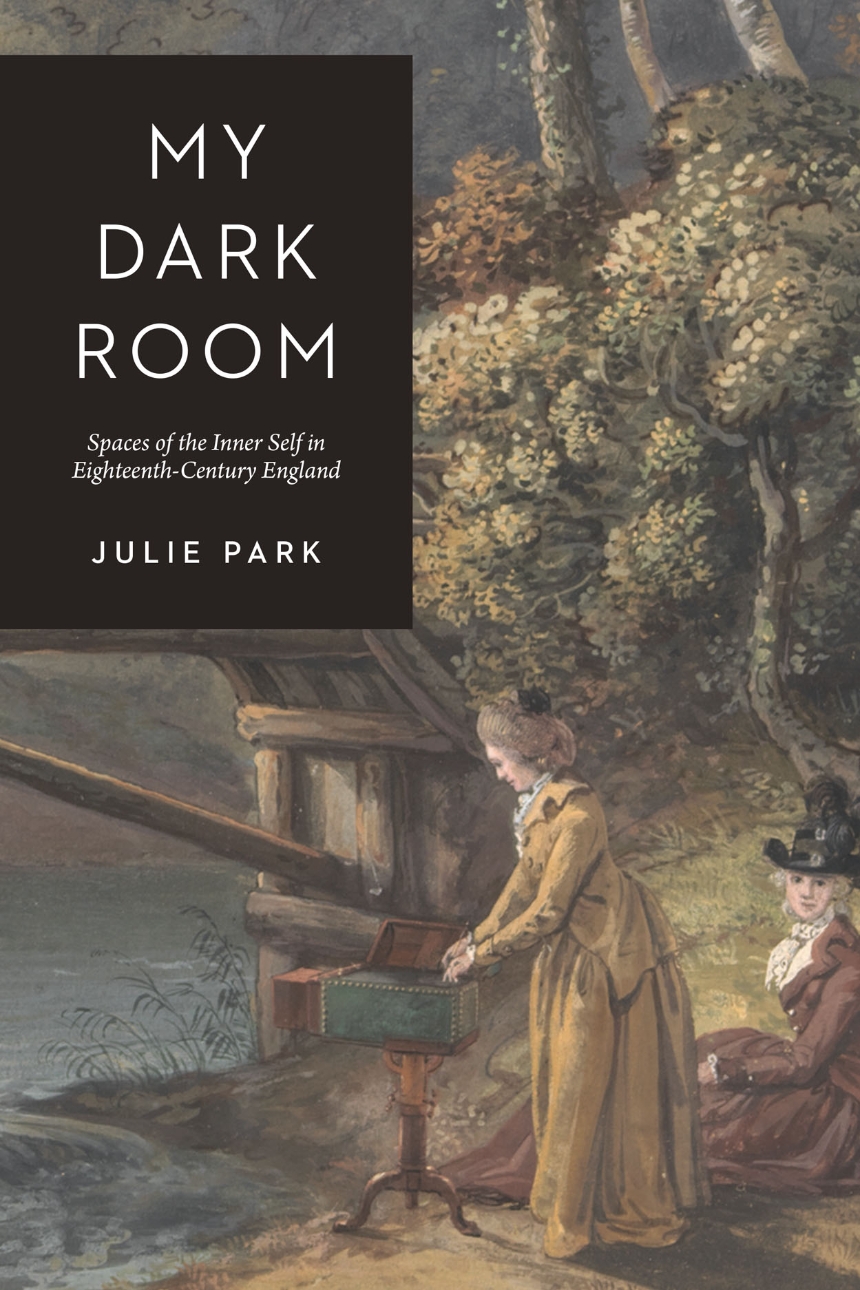My Dark Room
Spaces of the Inner Self in Eighteenth-Century England
9780226824765
9780226824758
9780226824772
My Dark Room
Spaces of the Inner Self in Eighteenth-Century England
Examines spaces of inner life in eighteenth-century England to shed new light on interiority in literature and visual and material culture.
In what kinds of spaces do we become most aware of the thoughts in our own heads? In My Dark Room, Julie Park explores places of solitude and enclosure that gave eighteenth-century subjects closer access to their inner worlds: grottos, writing closets, landscape follies, and the camera obscura, that beguiling “dark room” inside which the outside world in all its motion and color is projected. The camera obscura and its dreamlike projections within it served as a paradigm for the everyday spaces, whether in built environments or in imaginative writing, that generated the fleeting states of interiority eighteenth-century subjects were compelled to experience and inhabit.
My Dark Room illuminates the spatial and physical dimensions of inner life in the long eighteenth century by synthesizing material analyses of diverse media, from optical devices and landscape architecture to women’s intimate dress, with close readings of literary texts not traditionally considered together, among them Andrew Marvell’s country house poem Upon Appleton House, Margaret Cavendish’s experimental epistolary work Sociable Letters, Alexander Pope’s heroic verse epistle Eloisa to Abelard, and Samuel Richardson’s novel Pamela. Park also analyzes letters and diaries, architectural plans, prints, drawings, paintings, and more, drawing our attention to the lively interactions between spaces and psyches in private environments. Park’s innovative method of “spatial formalism” reveals how physical settings enable psychic interiors to achieve vitality in lives both real and imagined.
In what kinds of spaces do we become most aware of the thoughts in our own heads? In My Dark Room, Julie Park explores places of solitude and enclosure that gave eighteenth-century subjects closer access to their inner worlds: grottos, writing closets, landscape follies, and the camera obscura, that beguiling “dark room” inside which the outside world in all its motion and color is projected. The camera obscura and its dreamlike projections within it served as a paradigm for the everyday spaces, whether in built environments or in imaginative writing, that generated the fleeting states of interiority eighteenth-century subjects were compelled to experience and inhabit.
My Dark Room illuminates the spatial and physical dimensions of inner life in the long eighteenth century by synthesizing material analyses of diverse media, from optical devices and landscape architecture to women’s intimate dress, with close readings of literary texts not traditionally considered together, among them Andrew Marvell’s country house poem Upon Appleton House, Margaret Cavendish’s experimental epistolary work Sociable Letters, Alexander Pope’s heroic verse epistle Eloisa to Abelard, and Samuel Richardson’s novel Pamela. Park also analyzes letters and diaries, architectural plans, prints, drawings, paintings, and more, drawing our attention to the lively interactions between spaces and psyches in private environments. Park’s innovative method of “spatial formalism” reveals how physical settings enable psychic interiors to achieve vitality in lives both real and imagined.
344 pages | 8 color plates, 50 halftones | 6 x 9 | © 2023
Art: British Art
Literature and Literary Criticism: British and Irish Literature
Reviews
Table of Contents
Introduction
1. Country House: Making Storylines at Nun Appleton
2. Closet: Margaret Cavendish’s Writing Worlds
3. Grotto: Design and Projection in Alexander Pope’s Garden
4. Pocket: Pamela’s Mobile Settings and Spatial Forms
5. Folly: Fictions of Gothic Space in Eighteenth-Century Landscapes
Epilogue
Acknowledgments
Notes
Bibliography
Index
1. Country House: Making Storylines at Nun Appleton
2. Closet: Margaret Cavendish’s Writing Worlds
3. Grotto: Design and Projection in Alexander Pope’s Garden
4. Pocket: Pamela’s Mobile Settings and Spatial Forms
5. Folly: Fictions of Gothic Space in Eighteenth-Century Landscapes
Epilogue
Acknowledgments
Notes
Bibliography
Index
Awards
Choice Magazine: CHOICE Outstanding Academic Title Awards
Won
Modern Language Association of America: James Russell Lowell Prize
Honorable Mention
